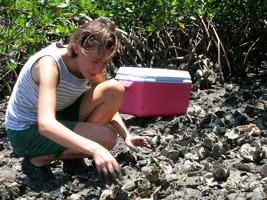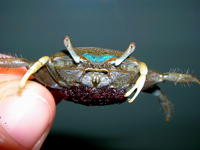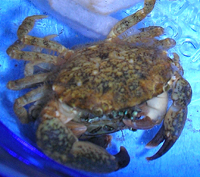
Meet Our Graduate Students
Interesting Fact: As an undergraduate she spent a semester aboard a 125 foot sailing vessel in the Gulf of Mexico as part of the SEA Program based in Woods Hole, MA. Paula always loved collecting; she simply enjoyed being in the field and the process of gathering samples. She comes from a family of biologists and grew up on the coast, so becoming a marine scientist was a natural evolution for her. As a high school student, Paula was given a wonderful opportunity to study sea urchin reproduction with a professor at the University of New Hampshire. She continued to work on this project throughout college and conducted an independent research project in New Zealand. From that experience, Paula knew she wanted to look at marine life and answer challenging ecological and evolutionary questions related to reproductive patterns in invertebrates. Understanding the Evolution of Sperm Storage in Marine Species Paula’s research addresses four fundamental questions, which include: 1) How do mating strategies interact with female sperm use and male sperm allocation to females? 2) Can functional morphology and mating behavior lead to size assortative mating and thus alter sperm use and allocation? 3) How have ecological factors shaped intraspecific sperm use? 4) Has phylogeny constrained reproductive output and thus altered sperm use? Observing the Mating Behavior of Crabs In order to examine the factors that have influenced the evolution and maintenance of female sperm storage, Paula is conducting a survey of reproductive traits of various crab species from around the world including crabs from the Chesapeake Bay, Florida, Belize, Chile and Panama. To do this she has collected roughly thirty species from five different superfamilies (fiddler, mud, grapsid, swimming and spider crabs), and hopes to gather twenty more species. Once Paula has the crabs, she begins the laborious task of counting sperm and eggs under a microscope. In order to better understand how sperm storage patterns relate to mating behavior, she is also conducting mating experiments both in the field and in the lab of several representatives within each superfamily. A Career in Conservation, Research, and Teaching Paula chose to pursue her PhD at the University of Maryland because she was very interested in her advisors’ research programs. Her advisors focus on researching important ecological interactions – Dr. Hines focuses on questions relating to the blue crab in the estuarine environment of the Chesapeake Bay, and Dr. Reaka on species diversity and extinction in coral reef communities. Both are interested in better understanding human impacts in these communities and in addressing conservation measures. Paula appreciates the friendly community in the biology department and the support of her advisors and the other graduate students in the program. After graduating next May, Paula is interested in looking into a research and teaching position. Visit the Department of Biology website. Visit the Smithsonian Environmental Research Center.
|
[an error occurred while processing this directive]
![]()
| Prospective Graduate Students |
College of Chemical & Life Sciences * University of Maryland * College Park, MD 20742
 Paula Rodgers
Paula Rodgers
